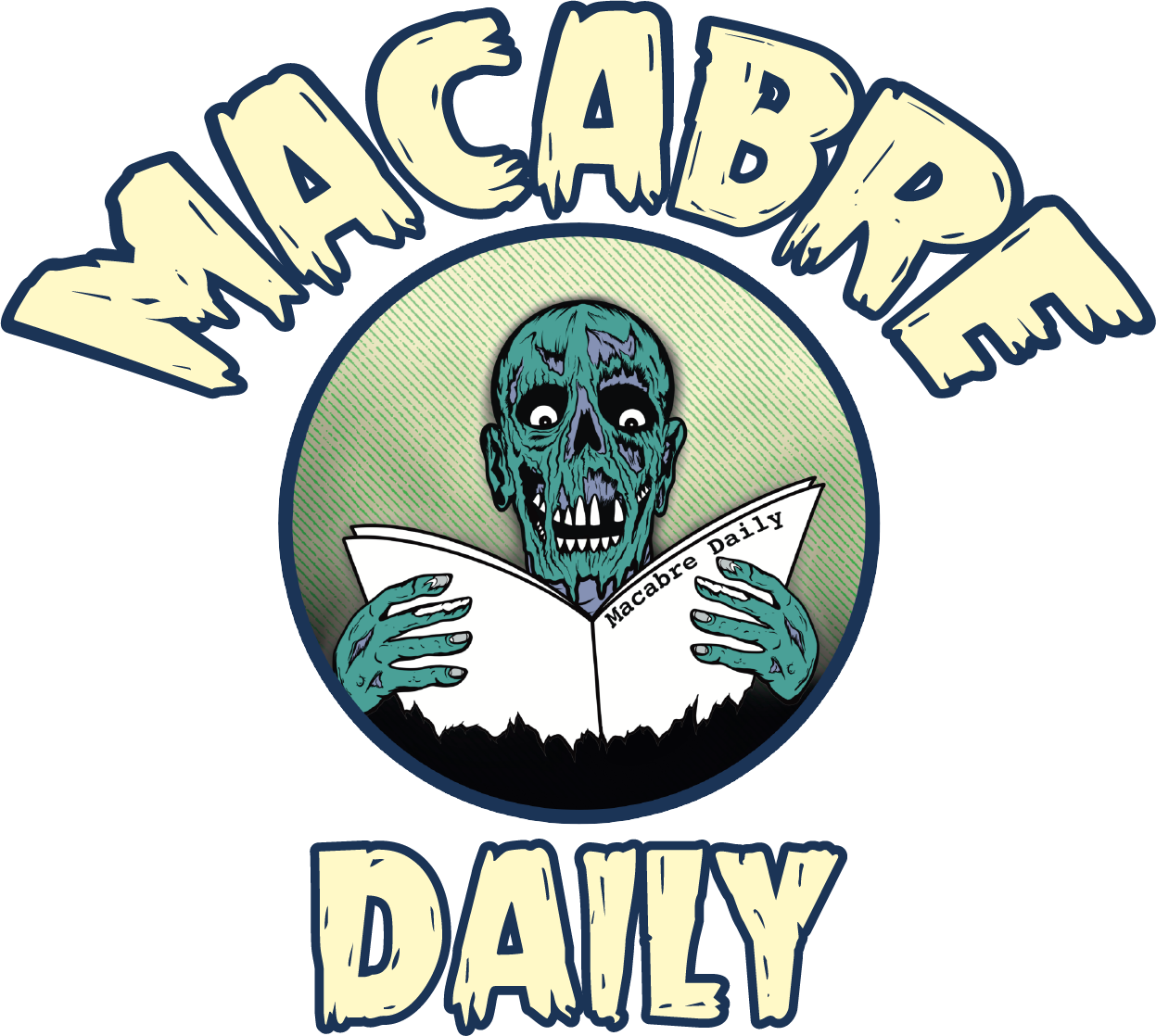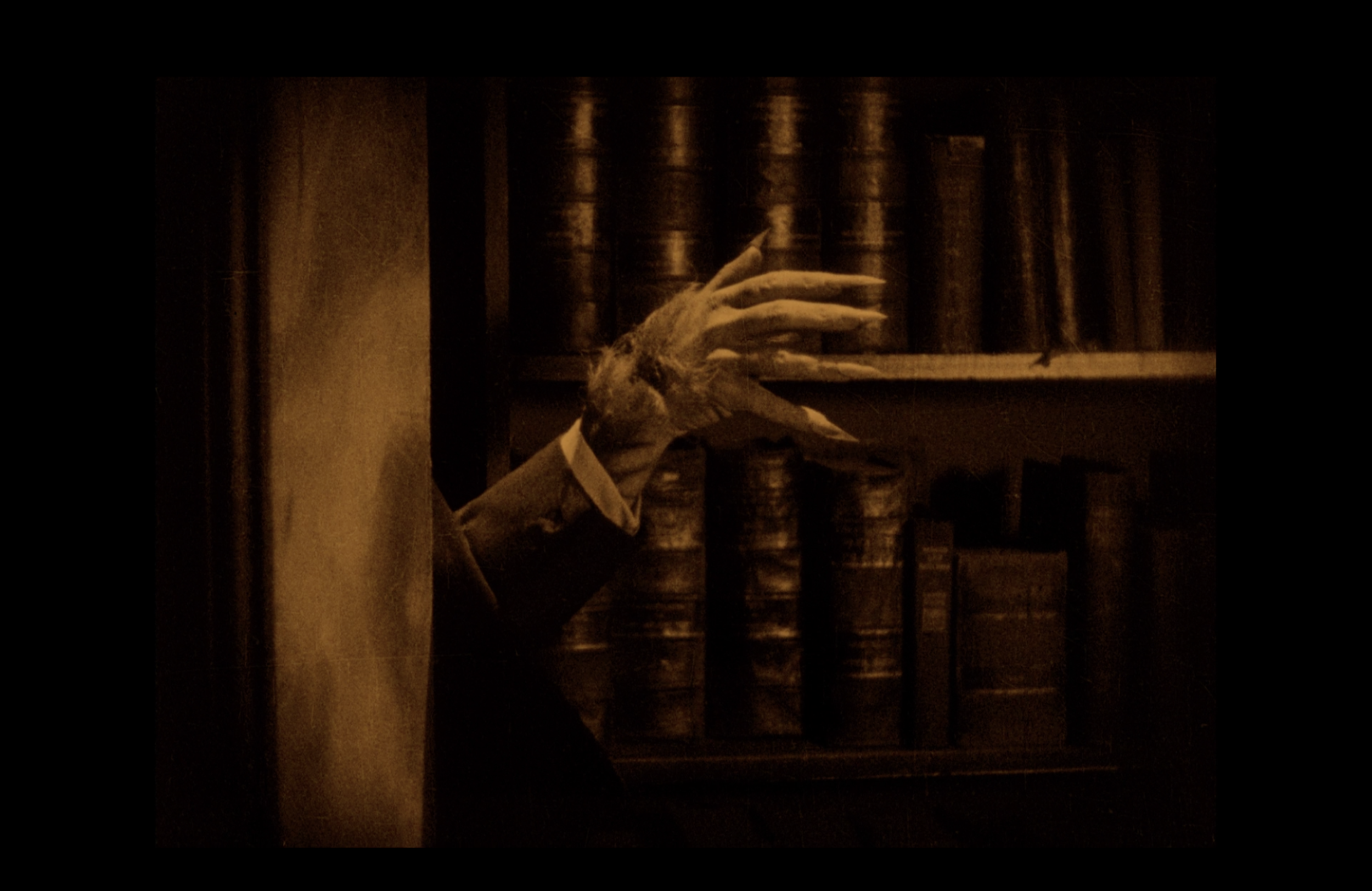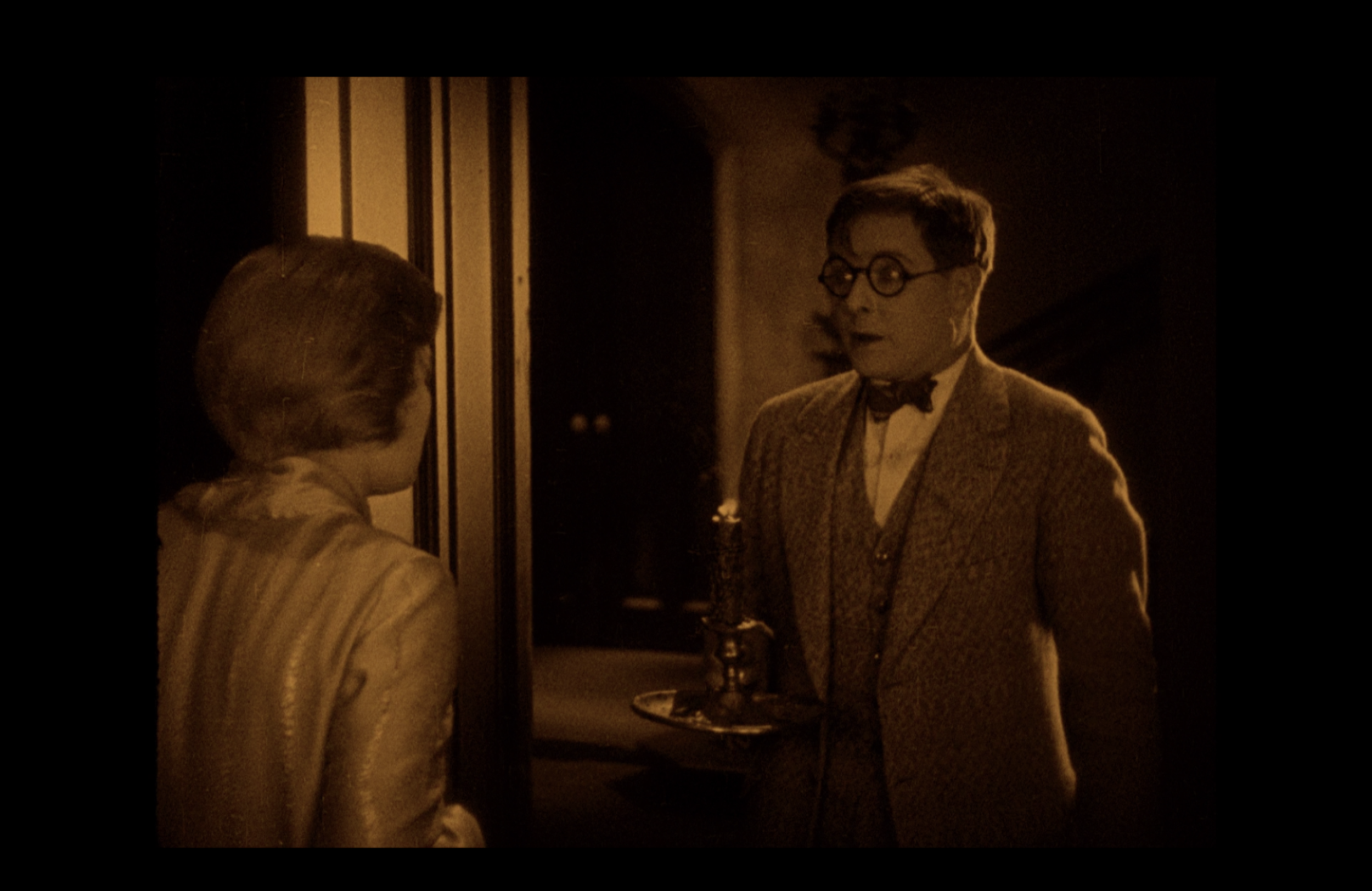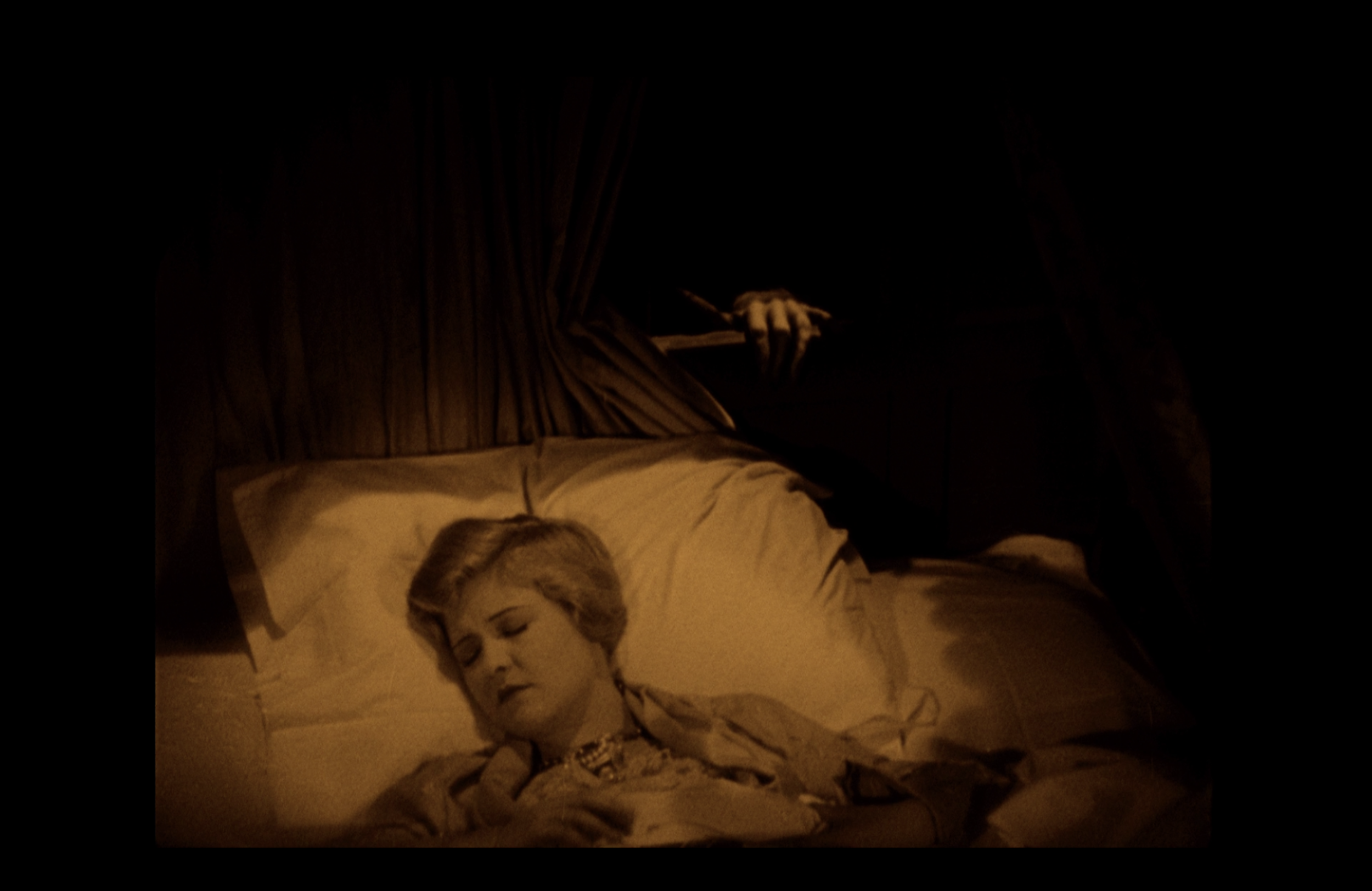COLLECTOR'S CRYPT - THE CAT AND THE CANARY (EUREKA ENTERTAINMENT BLU RAY)
Physical media collectors are some of the most important collectors out there. While this statement is certainly biased (you are reading a column explicitly for physical releases), it is not as hyperbolic as it may seem. The increased prevalence and reliance on streaming media is having an unfortunate impact on two very important facets of film history; preservation and restoration. The deluge of content available to us is mind-numbing, but one doesn’t have to look far to notice how redundant and similar some of it is. While this has been the case for as long as film has been around, to some extent, the focus on creating new content has repositioned the importance of going back to our cinematic roots. Cinefiles need no convincing, and horror fans often lament for decades like the 80s as they romanticize mediocrity because it’s en vogue. What you get is a re-release of the same film on yet another medium, while films that are still stuck on analog are either lost, forgotten, or ruined. Boutique labels know this, and while the world of films rights and licensing isn’t straightforward, it is important to ensure that historic works do not get lost in the technological translation. Which seems to be the foundation for Eureka Entertainment’s Masters of Cinema series, and their inaugural release of The Cat and the Canary. Do you dare challenge your own tastes and perceptions for the benefit of historical context and understanding?
WHAT’S IT ABOUT?
Relatives of an eccentric millionaire gather in his spooky mansion on the 20th anniversary of his death for the reading of his will.
HOW IS IT?
Maya Angelou famously said, “You can’t really know where you’re going until you know where you have been”. These words hold true in every regard, especially for genre film. Horror like any other art form evolves over time and if you consider yourself a student of that art, you must understand how we got where we are. One of the oldest and most influential films in the genre is Paul Leni’s “The Cat and the Canary”. A film from an era before there was sound on film and title cards along with camera tricks were used to relay dialogue and atmosphere. “The Cat and the Canary” is a landmark film in that it gave us a trope repeated even to this day, “the old dark house”. Pioneers of any kind have the unique opportunity not only to make a mark, but change the fabric of the medium/industry, or in this case genre, they are innovating in. They also share the unfortunate burden of age, which to some can be an immediate turn-off on account of the aged aesthetics, pacing, and delivery. Still, as most genre fans and historians know, those are not signs of weakness as they are a reminder of how far we have come and how exactly we got here.
“The Cat and the Canary” has a plot you’ve heard before, but that’s also because this film is the origin of that popular narrative framing. Based on a 1922 play of the same name, “The Cat and the Canary” sees a group of money-hungry family members “pouncing” (pun intended) at the opportunity to inherit the wealth of their thought-to-be deranged millionaire relative. Director Paul Leni is one of the German imports brought to the US as part of the Expressionism boom in the early 20th century. This new way of filmmaking was steeped in novel camera tricks, jagged and pointy set design, and a unique focus on the more macabre styles of storytelling. The idea of zealous and greedy family members flocking to an old, creepy mansion is a cornerstone of the genre today, but “The Cat and the Canary” is where it all began. Visually, the film is going to jar some viewers who haven’t explored films from the silent era. The scenes are drenched in hues of blue and sepia tones that offer a stark contrast to the color films we see as a staple today. That is, however, part of the charm. While the look and technique may feel dated, it is one of the most innovative pieces of filmmaking as it shaped so much of how films were made thereafter. The superimposing of images to create a dream-like atmosphere, as seen in the opening with Cyrus being engaged and surrounded by kittens is part of the building blocks that led us to camera tricks like the face-blending scene in Panos Cosmatos’ Mandy. The archetypes of bumbling do-gooders and handsomely nefarious playboys are rooted in the characters from “The Cat and the Canary”. Movies like Ready or Not have much to owe to Leni’s historical film, even if they aren’t as pacey as modern cinema.
One thing that may turn off some viewers is the lack of diegetic sound and dialogue. The score is the only sound and it is disconnected from the film, despite playing an important role in prescribing mood and action. The title cards that serve as dialogue and exposition demand the viewer keep their eyes on the screen, for they may not be fully aware of what’s going on if they don’t. There is no passive engagement with a film like “The Cat and the Canary”, so it may be hard for some to stick with it. This shouldn’t discourage you, however, since this film reflects a point in time when so much of the viewing experience relied on pairing the sound, film, and imagination as one without having the ease of suspending disbelief through modern practical effects and digital sorcery. The score is absolutely a character here and is part of the overall experience, with these particular elements being remastered for this release but based on the original City of Prague Philharmonic Orchestra. The film does drag some and runs a bit long given the story, but again, one must appreciate the historical context and refrain from comparing it to films made almost 100 years later. In many ways, “The Cat and the Canary” being viewed with a modern lens feels closer to the original play in terms of performance. Small sets, strategic use of sound, and a cast that has to act in excess to compensate for the medium. This film won’t be for everyone, but those who want to see just how far the genre has come would do well to add this piece of film history to their collection.
HOW DOES IT LOOK?
“The Cat and the Canary” is an arresting film, but how you receive it will likely depend on familiarity with silent-era films. As mentioned in the review of the film, “The Cat and the Canary” has a unique look that is a byproduct of the technology available at the time. This transfer is directly sourced from the camera negatives borrowed from the MOMA, and to be frank, a film from this time has never looked so damn good. While there are some artifacts of age apparent, the overall delivery is extremely crisp and doesn’t appear to have many of the hallmarks of films from this time. This adds so much to the presentation since the visuals and the music are the most prominent mediums since dialogue and diegetic sound were not available. This really is a masterpiece of restoration work, and you can see images from this release used throughout the review and below.
HOW DOES IT SOUND?
On par with the visual restoration, this release also includes a 5.1 DTS-HD audio track score compiled by Robert Israel taking reference from the original cues during the films initial release. The sound is as much a character in the film as the actors, and is crucial in collaborating with the visuals to determine tone and atmosphere. There are also nods to the use of orchestral sound to create seemingly diegetic effects like that of wind blowing, which further immerses the viewer and offers a listening experience that is long forgotten. The 5.1 track has a very full and robust sound, where the horns and wood instruments sing in perfect harmony alongside the innovative (for the time) visuals.
ANYTHING SPECIAL?
A film of such historical importance to the horror genre (all genres, really) should be met with an equal amount of consideration around special features. “The Cat and the Canary” is part of Eureka Entertainment’s “Masters of Cinema” series and Eureka has certainly cobbled together some great supplemental material for the genre historians. The first feature we took in was the 30-minute video essay “Mysteries Mean Dark Corner” by David Cairns and Fiona Watson. The essay is narrated by Cairns and puts “The Cat and the Canary” in context around the claim that it was the “first of the ‘old dark house’ genre”. The essayists do not disagree with the claim so much as they qualify and explicitly detail where it fits in the genre it often gets credit for creating. To say it was the first of the genre would be disingenuous, rather, “The Cat and the Canary” was the first to popularize the genre on film and was even based on a stage play prior. The essayists contend that “The Cat and the Canary” is just one of many in a long-line of plays and books to exist before, but never gaining popular traction like this film did. It also details the various players in the film, and some of their adjacent contributions as well as stylistic influences. It is a superb piece, especially for those with the desire to explore the history as much as the output.
The other feature we took in was a shorter, 13-minute interview with critic Pamela Hutchinson aptly titled, “Pamela Hutchinson on The Cat and the Canary”. This is a much more focused piece of critique than the latter feature, and narrows in on Leni and the various contributors to the film as well as the reason why this film has gained such a reputation. Hutchinson explores the use of various filmmaking techniques, the way in which the story perfectly blends elements of comedy and horror together, and muses on why it is still one of the more impactful and impotant pieces of filmmaking despite the barrier of age and style. This is the kind of thing we would encourage naysayers of silent era films take a ganders at in the hopes of inspiring some curiosity and venturing outside of cinema comfort zones. A full list of special features included in this release is listed below.
SPECIAL FEATURES:
Limited edition O-Card slipcase featuring new artwork by Graham Humphreys
1080p HD presentation on Blu-ray from a 4K digital restoration of the original negatives supplied by MoMA
DTS-HD MA 5.1 score by Robert Israel; compiled, synchronized and edited by Gillian B. Anderson, based on music cue sheets compiled and issued for the original 1927 release
Brand new audio commentary by author Stephen Jones and author / critic Kim Newman
Brand new audio commentary by Kevin Lyons and Jonathan Rigby
Mysteries Mean Dark Corners – brand new video essay by David Cairns & Fiona Watson
Pamela Hutchinson on The Cat and the Canary – brand new interview with writer and film critic Pamela Hutchinson
Phuong Le on The Cat and the Canary – brand new interview with film critic Phuong Le
A Very Eccentric Man & Yeah, a Cat! – extracts from John Willard’s original play
Lucky Strike – Paul Leni gives a full-throated endorsement to the product that got him through filming The Cat and the Canary
A collector’s booklet featuring new writing on the film by Richard Combs, Craig Ian Mann, and Imogen Sara Smith
LAST RITES
“The Cat and the Canary” is a part of history. Regardless of your preferred taste, it stands as important and landmark film that not only gave birth to genre of film tropes still in use today, but is combined with some top-tier supplemental features that truly make this release live up to its title as part of the “Masters of Cinema” collection. Eureka Entertainment has given film collectors and genre historians a penultimate version of this groundrreaking film.
THE GORY DETAILS
Thank you to the fine fiends over at MVD ENTERTAINMENT for providing a review copy for the crypt! The Cat and the Canary is available NOW and can be purchased via MVD DIRECT!
Stay up to date with “The Dark Side Of Pop Culture” by following Macabre Daily on Instagram, Facebook, and Twitter.





















